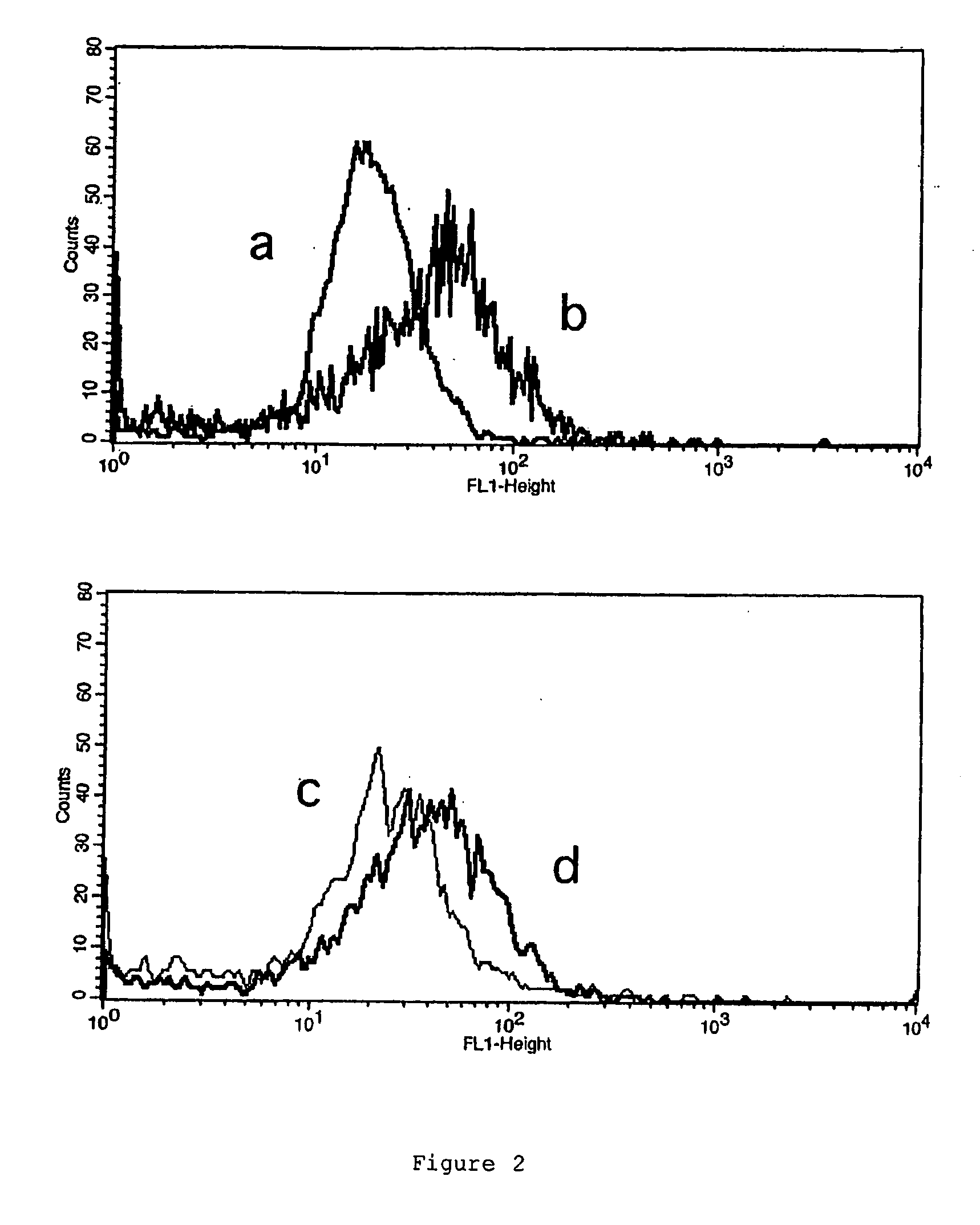Reversibly inhibited antibodies for immune cell stimulation
- Summary
- Abstract
- Description
- Claims
- Application Information
AI Technical Summary
Benefits of technology
Problems solved by technology
Method used
Image
Examples
examples
Methods
Antibodies and Cell Lines
[0068]The CD3+T-cell line H9 was obtained from ETCC. The OKT3 secreting hybridoma was obtained from ATCC and OKT3 was obtained from serum free media by (NH4)2SO4 precipitation. The human ovarian cell line, OAW42, which was used to produce conditioned RPMI media was kindly provided by Dr A Wilson, Derby General Hospital.
[0069]The CD3+ murine cell line EL4 was stored in this laboratory. This cell line was grown in RPMI 1640 media containing 10% FCS. The 145-2C11 monoclonal antibody secreting hybridoma was obtained from ECACC. The antibody was precipitated from serum free media using (NH4)2SO4 followed by extensive dialysis.
Reversible Inhibition of Antibodies
[0070]OKT3 (0.5 mg in 1 ml 0.1M Bicarbonate) was rendered inactive by the addition of 15 μl NPE-carbonyl chloride (in dioxan) for 4 h at 20° C. followed by centrifugation and dialysis to remove excess reagents and insoluble reaction products8. When this was irradiated with UV-A light the NPE groups c...
PUM
| Property | Measurement | Unit |
|---|---|---|
| Mass | aaaaa | aaaaa |
| Mass | aaaaa | aaaaa |
| Mass | aaaaa | aaaaa |
Abstract
Description
Claims
Application Information
 Login to view more
Login to view more - R&D Engineer
- R&D Manager
- IP Professional
- Industry Leading Data Capabilities
- Powerful AI technology
- Patent DNA Extraction
Browse by: Latest US Patents, China's latest patents, Technical Efficacy Thesaurus, Application Domain, Technology Topic.
© 2024 PatSnap. All rights reserved.Legal|Privacy policy|Modern Slavery Act Transparency Statement|Sitemap


